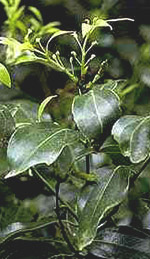 Distillers derive ravensara essential oil from Ravensara aromatica, an evergreen laurel species that has limited cultivation in several regions around the world. The major essential oil properties include being antiseptic, antibacterial and antiviral. Not surprisingly, the use of ravensara oil for cold sores, shingles, and herpes-related outbreaks is very useful for self treatment by those in search of alternatives to prescriptions or over-the-counter medicines that might have unpleasant scents and side effects [1].
Distillers derive ravensara essential oil from Ravensara aromatica, an evergreen laurel species that has limited cultivation in several regions around the world. The major essential oil properties include being antiseptic, antibacterial and antiviral. Not surprisingly, the use of ravensara oil for cold sores, shingles, and herpes-related outbreaks is very useful for self treatment by those in search of alternatives to prescriptions or over-the-counter medicines that might have unpleasant scents and side effects [1].
Ravensara aromatica is one of around ten evergreen laurel species endemic to the island of Madagascar, meaning they grow nowhere else in the world [2]. The genus was first described and placed in the family Lauraceae by Sonnerat in 1782. Ravensara is a large tree that can grow up to 30 m (98 feet) in height, with broad shiny green leaves that emit a camphoraceous smell similar to eucalyptus leaves [1]. The ethnic Malagasy people of Madagascar call ravensara “hazomanitra”, or “tree that smells”, due to its penetrating aroma!
Before we talk about the benefits of ravensara essential oil for herpes and other conditions, it’s important to distinguish it from ravintsara, an essential oil with a similar name but different uses in aromatherapy. Ravintsara oil is a type of essential oil distilled from the camphor tree Cinnamomum camphora. While it is in the same family as ravensara, it is definitely not the same oil! Although both ravintsara and camphor oil come from the same species, they are labeled and sold as different oils because they are different chemotypes–meaning they differ in the types and ratios of chemical compounds that occur in their essential oils. Ravintsara is highest in 1,8-cineole, the same main active compound in eucalyptus oil [3].
To add to the confusion, ravintsara oil is also grown on Madagascar as an introduced species cultivated for its essential oil. Thus when buying ravensara oil, you should always check the label on your supplier’s website for the genus-species name to make sure you’re getting true Ravensara aromatica oil.
Ravensara essential oil is used an antiseptic, expectorant, antibacterial, and antiviral in folk medicine. Its best-known use is to combat intractable viral infections such as shingles, cold sores and herpes [4]. Herpes is known as a viral infection for which there is said to be no actual cure. Skin lesions provide a visible reminder of the ailment, and for some they occur more often than others. Of course, when an outbreak does occur, it is painful and also rather unsightly. Adding insult to injury, these outbreaks usually happen when someone is stressed, which is perfectly understandable considering the impact of stress in our daily lives.
Ravensara oil offers topical relief while concurrently dealing with the viruses [4]. Some people can use the oil “neat” or undiluted as a spot treatment in smaller areas, such as for a cold sore; however, it is frequently mixed with a carrier oil or another non-sensitizing oil as a base. Either way, it can greatly decrease the amount of visible skin lesions and shorten the duration of any outbreak. Of course, using ravensara oil for cold sores, shingles, and herpes-related outbreaks may introduce the substance to highly sensitive skin areas, so a patch test is recommended before extensive use.
Although unlikely, be mindful of the potential for a possible skin irritation. Since the application of the essential oil is frequently very close to mucous membranes, there is a chance that over-mixing ravensara essential oil might result in too strong a substance that could lead to skin irritations. Experiment with different concentrations until you find the one that works just right for you. Other essential oils with similar antibacterial and antiviral properties that you might consider trying, especially for skin conditions, include tea tree oil and lavender oil.
REFERENCES
1. “Ravensara aromatica” Wikipedia. Last modified May 16th, 2013. http://en.wikipedia.org/wiki/Ravensara_aromatica.
2. “Ravensara”. Wikipedia. Last modified March 21st, 2013. http://en.wikipedia.org/wiki/Ravensara.
3. “Ravintsara vs. Ravensara: What’s the Difference?” The East-West School for Herbal and Aromatic Studies. Accessed July 7th, 2014. http://theida.com/essential-oils/ravintsara-vs-ravensara-what’s-the-difference.
4. Battaglia, Salvatore. 2003. The Complete Guide to Aromatherapy. International Center of Holistic Aromatherapy.

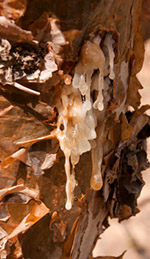 The well-known story of the three Magi bringing gifts to the newborn baby in Bethlehem is a cherished vision, but the value of those gifts is often underrated by those who don’t understand how priceless these essences were to people living in those regions of the world during the first century.
The well-known story of the three Magi bringing gifts to the newborn baby in Bethlehem is a cherished vision, but the value of those gifts is often underrated by those who don’t understand how priceless these essences were to people living in those regions of the world during the first century. Many people suffer from headaches and migraines, and these conditions can be more than troublesome or aggravating; often, these conditions become debilitating. Tension headaches and sinus headaches can be extremely painful and significantly diminish a person’s quality of life. Migraines, when severe, can completely put a person’s life on hold. Migraine symptoms such as nausea, light sensitivity, and a relentless headache can seriously, negatively impact an individual’s professional and personal life. If you are a headache or migraine sufferer, you may want to consider a natural treatment remedy such as
Many people suffer from headaches and migraines, and these conditions can be more than troublesome or aggravating; often, these conditions become debilitating. Tension headaches and sinus headaches can be extremely painful and significantly diminish a person’s quality of life. Migraines, when severe, can completely put a person’s life on hold. Migraine symptoms such as nausea, light sensitivity, and a relentless headache can seriously, negatively impact an individual’s professional and personal life. If you are a headache or migraine sufferer, you may want to consider a natural treatment remedy such as 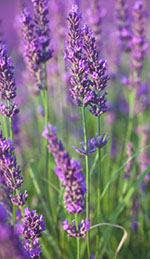 The daily demands and pressures of life can be quite distressing, in particular those demands that are work related. Work-related stress is a fact of life with which most individuals deal. Work-related stress not only negatively impacts work performance, but it can also adversely affect personal relationships as well. Stress from work can lead to fatigue, aching muscles, headaches, stomach problems, and emotional difficulties such as anxiety or depression. When you need to relieve work-related stress, you may want to consider using
The daily demands and pressures of life can be quite distressing, in particular those demands that are work related. Work-related stress is a fact of life with which most individuals deal. Work-related stress not only negatively impacts work performance, but it can also adversely affect personal relationships as well. Stress from work can lead to fatigue, aching muscles, headaches, stomach problems, and emotional difficulties such as anxiety or depression. When you need to relieve work-related stress, you may want to consider using 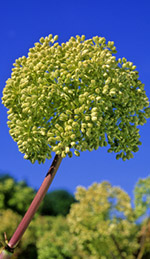 Humankind’s connection with nature is well documented through the centuries. Plants and trees have played a vital role in human mental and physical wellness, and they continue to present new avenues for general well-being and emotional stability.
Humankind’s connection with nature is well documented through the centuries. Plants and trees have played a vital role in human mental and physical wellness, and they continue to present new avenues for general well-being and emotional stability. 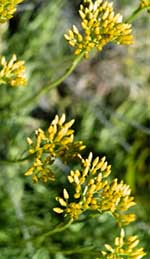 The phrase “what’s old is new again” certainly fits as a description for what the Greeks called “Gold of the Sun.” Helichrysum, from the flowers of the species Helichrysum angustifolium and Helichrysum italicum, has been used for centuries to create an oil that has cicatrisant properties to reduce scar tissue [1]. The chemical constituents in helichrysum oil, including linalool, limonene, a-pinene, geraniol, camphene, nerol, 1,8-cineole, terpinen-4-ol, neryl acetate, vitalidone, and eugenol, also have the ability to treat arthritis, respiratory conditions such as sinus infections and coughing, and may enhance tissue regeneration [1].
The phrase “what’s old is new again” certainly fits as a description for what the Greeks called “Gold of the Sun.” Helichrysum, from the flowers of the species Helichrysum angustifolium and Helichrysum italicum, has been used for centuries to create an oil that has cicatrisant properties to reduce scar tissue [1]. The chemical constituents in helichrysum oil, including linalool, limonene, a-pinene, geraniol, camphene, nerol, 1,8-cineole, terpinen-4-ol, neryl acetate, vitalidone, and eugenol, also have the ability to treat arthritis, respiratory conditions such as sinus infections and coughing, and may enhance tissue regeneration [1].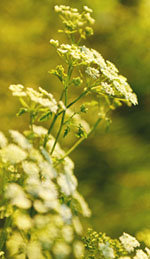 Carrots have been around the Middle East and throughout Europe for centuries. The Greeks and the Romans were well aware of the medicinal properties of
Carrots have been around the Middle East and throughout Europe for centuries. The Greeks and the Romans were well aware of the medicinal properties of 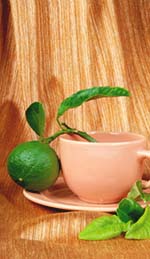 Some experts say that the bergamot tree is native to Southeast Asia and it was introduced to Europe years later, but others say its ancestral home was Greece. Regardless of its origin, the strange cross between a lime and orange tree (although some say orange and grapefruit tree) has made the Calabria region of Italy famous.
Some experts say that the bergamot tree is native to Southeast Asia and it was introduced to Europe years later, but others say its ancestral home was Greece. Regardless of its origin, the strange cross between a lime and orange tree (although some say orange and grapefruit tree) has made the Calabria region of Italy famous.